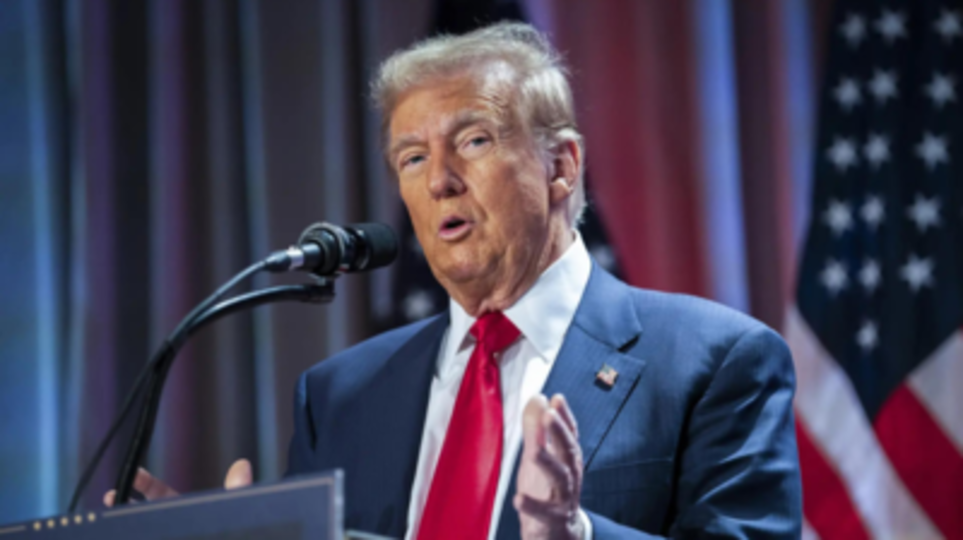Trump tariffs, India Escaped Trump’s Latest Tariff Storm While China, Mexico, and Canada Weren’t So Lucky
Sun, 2 Feb 2025

Trump tariffs : In a surprising move that has sent ripples across global trade markets, former U.S. President Donald Trump has announced a fresh wave of tariffs targeting China, Mexico, and Canada. However, in what many are calling a strategic exception, India has been notably excluded from this list. This decision has sparked widespread speculation and analysis among economists, policymakers, and trade experts, who are trying to decipher the underlying motives and potential implications of this move. The new tariffs, which are part of Trump’s broader "America First" policy, aim to protect U.S. industries and jobs by imposing additional costs on imported goods from these countries. China, long seen as the primary target of Trump’s trade policies, faces the brunt of these measures, with tariffs on a wide range of products, including electronics, machinery, and consumer goods. Mexico and Canada, despite being key trading partners under the United States-Mexico-Canada Agreement (USMCA), have also been included in this latest round of trade restrictions. What stands out, however, is India’s exclusion. Over the past few years, India and the U.S. have had their share of trade disputes, particularly over issues like digital taxes, tariffs on steel and aluminum, and market access for American agricultural products. Yet, in this latest development, India seems to have been given a reprieve. Analysts suggest that this could be a strategic move by the Trump administration to strengthen ties with India, a country increasingly seen as a crucial ally in countering China’s growing influence in the Indo-Pacific region. The decision to spare India from the new tariffs has been met with mixed reactions. On one hand, Indian exporters and businesses are breathing a sigh of relief, as they can continue to access the lucrative U.S. market without the added burden of higher tariffs. On the other hand, some experts caution that this could be a temporary reprieve, and India may still face trade challenges in the future if the U.S. decides to revisit its policies. For China, the new tariffs are yet another escalation in the ongoing trade war between the two economic giants. Since taking office, Trump has consistently accused China of unfair trade practices, including intellectual property theft, forced technology transfers, and excessive subsidies to domestic industries. The latest tariffs are seen as a continuation of this hardline approach, aimed at pressuring Beijing to make concessions and level the playing field for American businesses. Mexico and Canada, meanwhile, find themselves in a more complicated position. As close neighbors and major trading partners, the two countries have enjoyed relatively smooth trade relations with the U.S. under the USMCA, which replaced the North American Free Trade Agreement (NAFTA) in 2020. However, the new tariffs suggest that even these longstanding partnerships are not immune to Trump’s protectionist policies. Some experts argue that this could strain diplomatic relations and disrupt supply chains that are deeply integrated across North America. The exclusion of India from the new tariffs has also raised questions about the broader geopolitical landscape. In recent years, India has emerged as a key player in global trade and politics, with its large consumer market, growing economy, and strategic location making it an attractive partner for countries around the world. The U.S., in particular, has been keen to deepen its ties with India, viewing it as a counterbalance to China’s dominance in Asia. By sparing India from the latest tariffs, the Trump administration may be signaling its intent to further strengthen this partnership. At the same time, India’s exclusion could also be seen as a recognition of the country’s efforts to address some of the trade concerns raised by the U.S. In recent months, India has taken steps to ease restrictions on foreign investment, improve market access for American companies, and address issues related to intellectual property rights. These measures appear to have paid off, at least for now, as India avoids the additional costs and disruptions that come with higher tariffs. For American businesses, the new tariffs present both challenges and opportunities. While companies that rely on imports from China, Mexico, and Canada may face higher costs, those that compete with these imports could benefit from reduced competition. Additionally, the exclusion of India could open up new opportunities for American exporters looking to tap into one of the world’s fastest-growing markets. As the global trade landscape continues to evolve, the implications of Trump’s latest tariffs are likely to be felt far and wide. For China, the new measures are a reminder that the trade war is far from over, and that the U.S. remains committed to challenging its economic practices. For Mexico and Canada, the tariffs highlight the fragility of even the closest trade relationships in an era of growing protectionism. And for India, the exclusion offers a temporary respite and a chance to further strengthen its position as a key player in global trade. In the coming months, all eyes will be on how these countries respond to the new tariffs and what steps they take to protect their own interests. For now, one thing is clear: the world of international trade remains as unpredictable as ever, with every decision carrying the potential to reshape the global economic order. As businesses and governments navigate this complex landscape, the importance of diplomacy, negotiation, and strategic partnerships cannot be overstated. Whether this latest move by the Trump administration will lead to lasting changes or further uncertainty remains to be seen. But one thing is certain: in the world of global trade, nothing is ever as simple as it seems.
